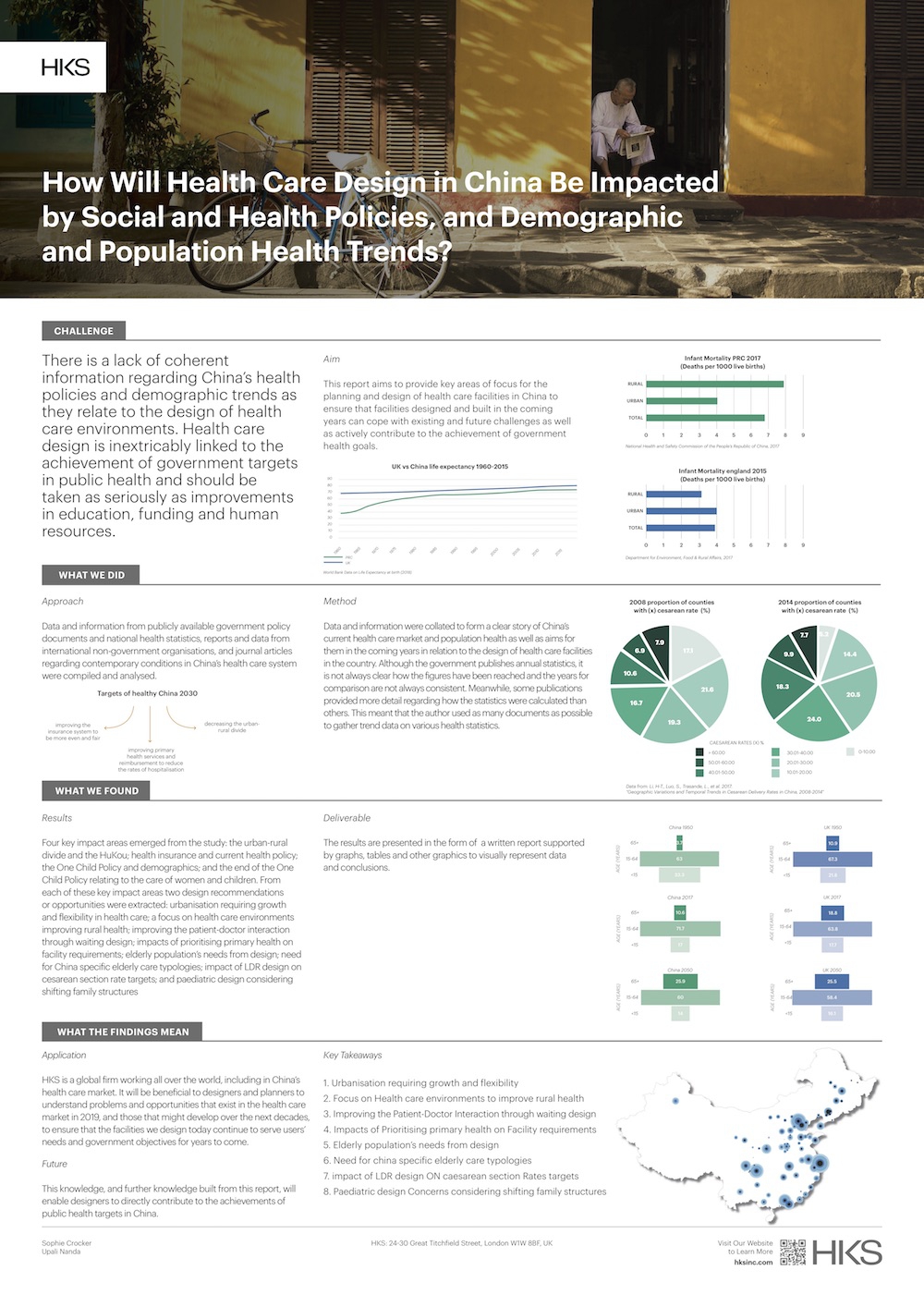Healthcare / Quality improvement
European Healthcare Design 2019
How will healthcare design in China be impacted by social and health policies and demographic and population health trends?
By Sophie Crocker and Upali Nanda | 12 Jun 2019 | 0
Much has been written about China’s healthcare system and the strides it has made in public health, but less attention has been paid to the physical environments, which are the focus of this poster.
Abstract
This research uses current social and health policies, along with statistics on population health and demographic trends, to suggest areas of focus for the planning and design of healthcare facilities in China. Healthcare design is inextricably tied to the achievement of government targets in public health and should be taken as seriously as improvements in education, funding and human resources.
Government policy documents and statistical communiqués, reports and data from the World Bank, the OECD and the United Nations, and other scholarly articles were analysed. While the author feels that the report can be relied upon to provide a broad picture, comprehensive data are somewhat difficult to access for China. Although the government publishes annual statistics, it’s not always clear how the figures have been reached and the years for comparison are not consistent. Meanwhile, some publications provided more detail regarding how the statistics were calculated than others. This meant that the author combed through as many documents as possible to gather trend data on various health statistics.
Through the lens of four key areas: the urban-rural divide and the HuKou; health insurance and current health policy; the One Child Policy and demographics; and the end of the One Child Policy relating to care for women and children, the author proposes eight areas for design recommendations; urbanisation requiring growth and flexibility in healthcare; a focus on improving rural health; improving the patient-doctor interaction; prioritising primary health; the elderly population’s needs from design; the need for China-specific elderly care typologies; the impact of reducing C-section rates on LDR design; and paediatric design considering shifting family structures and childhood obesity. Applying these recommendations will help ensure that the development of China’s healthcare buildings is more sustainable, by planning for long-term trends as well as targeting contemporary needs. It will begin the journey towards achieving a circular economy in health in China.
There are many complex social, demographic and health factors at play in the Chinese health system today. Some of these are specific to China, while other factors are increasingly common issues across middle- and high-income countries. The challenges China faces in augmenting and improving its healthcare system will require the determined effort of all levels of government with respect to policy, finance, and public and professional education. However, if China is going to achieve its targets it must also consider the built environments of health. No longer is it feasible for the design of healthcare environments to take a back seat to policy and financial investment. This research demonstrates how healthcare design is inextricably tied to the achievement of these targets and should be taken as seriously as the intended improvements in education, funding and human resources.
Organisations involved


